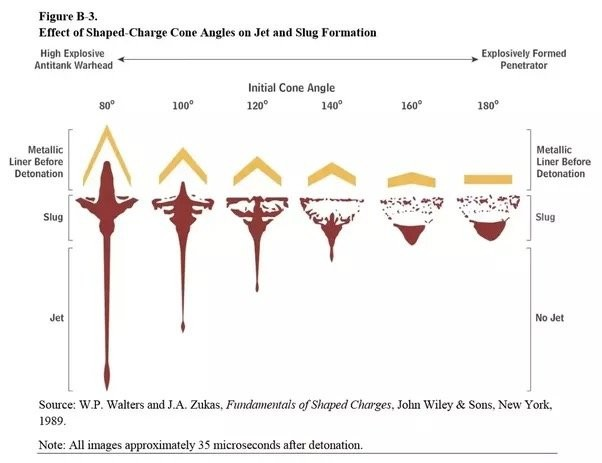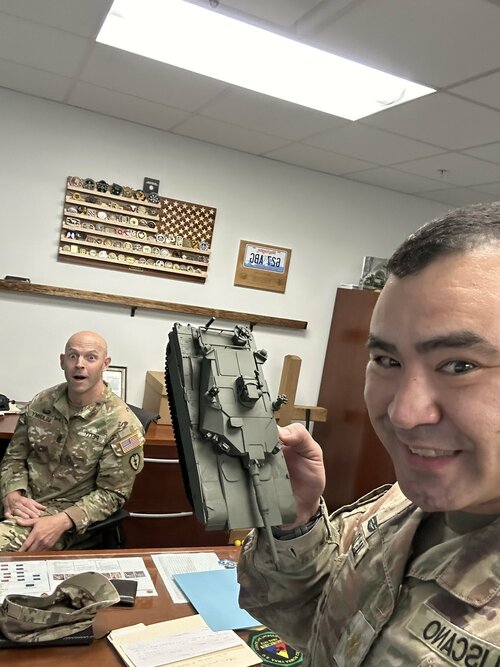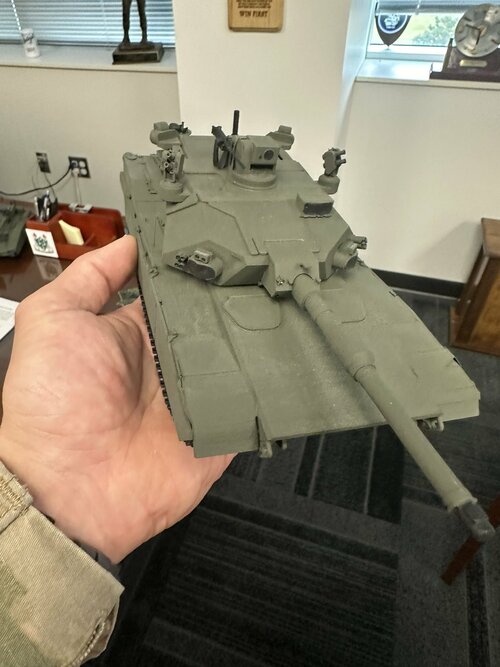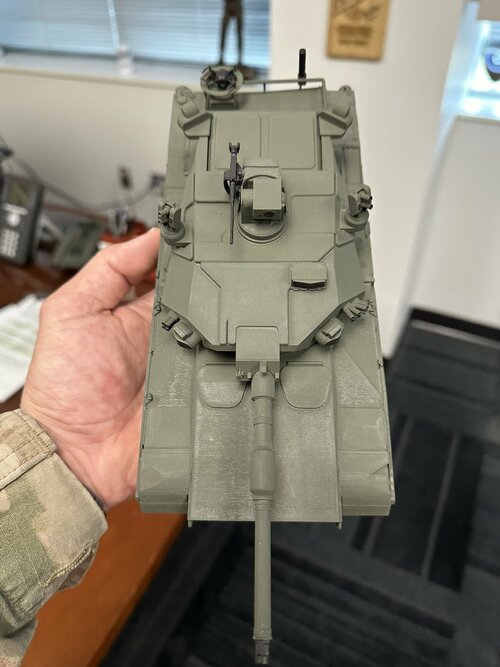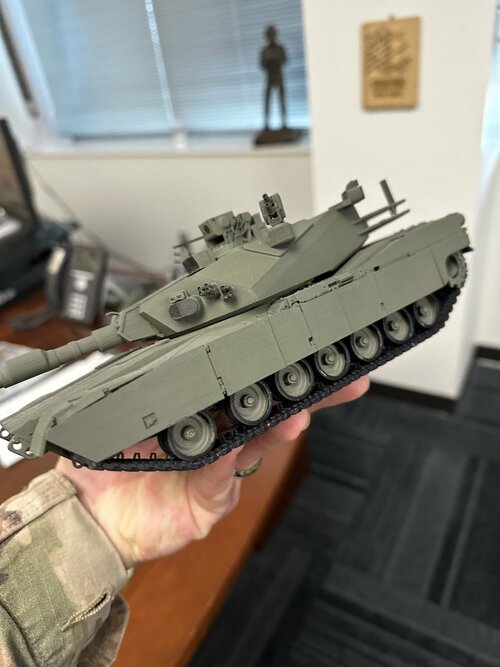But there's still a fighting need for a big gun that is mobile and can cross very rough ground. Because mobile big guns are valuable both tactically and economically, they get armored. That results in a tank.
A jeep with 120mm Recoilless does the job, cost nothing and you can add a remote control kit. When armor doesn't work you go mass.
Poorer forces relied on such force structures since the Toyota war and they function. Lack of heavy vehicles does not result in major strategic weakness that lead to their defeat, the only issue is higher casualties rate. In that sense the era of armor has ended decades ago.
There are also a lot of options of throwing a warhead other than direct fire guns all with their own advantages. A force structure with different mix of warhead throwers can fulfill tactical requirements, and not all of them need guns. Obsession with guns lead to stuff like NGFS lobby that resulted in the Zumwalt which collapsed upon the narrowness of the mission.
It is always possible to come up with some scenario where the favored weapon systems, but for god sakes one should calculate the probability of such a event happening. Wars are not won by having the perfect asset for one scenario, but winning more scenarios by good margins.
There is also adapting one's conceptualization of warfare to new realities.
Why did Carrier's considered a side show compared to battleships in the 30s even though long range recon and strike capability have been demonstrated and improves year over year? It is because Carriers had very poor throw weight, with basically one sortie per day with inability to reliability sink a heavy combatant within that time frame. A battleship can match a Carrier's daily throw weight in minutes.
But it doesn't matter, you don't need to defeat the enemy fleet in one strike to win the war. One can apply slow attrition and avoid decisive action and win.
--------------------------------
The idea that "combined arms" means you have all the right assets for the situation is a big mistake. The right way to think is that you have a random collection of assets in practice as the enemy is inflicting losses and making your combined arms system collapse. You can buy more of something to make it so that you have it more often.
So you can imagine missing a entire category of assets, and what it does to your operations.
If you have no AA, drone swarm descend on you and you are destroyed. If you have no artillery, enemy artillery pound you into underground passivity. If you have no tanks, you have that private with Carol Gustav, spend a FOGM, or wait a minute for 155mm to land or something.
The M10 is an assault gun, it doesn't have enough armor to fight tanks head-on. But it will have a few APFSDS rounds in the basic ammo load in case of severe "oh shit" like a Tank Battalion breaking through the local area. Since the M10 is assigned to Infantry Brigades, there's no shortage of Javelins around to deal with most of that Tank Battalion.
Doctrinal use of vehicles is a meme especially when the last representative war was a long time ago. On the battlefield any vehicle that remotely function for any role will get used for that role when there is a shortage of forces, which is all the time in higher intensity conflict.
In WW2, the doctrine people came up with a dozen of vehicle classifications with highly specific roles. When field commanders get the vehicles they use everything for everything.
The Tank destroyers designed as mobile reserves as counter breakthrough spend the war firing high explosives in direct and indirect support of infantry. The medium tank for exploitation actions get thrown into breakthrough armor battles. Inability to penetrate enemy armor frontally is dealt with smoke, high explosive, flanking and other tactics. The medium also spend a huge amount of time in infantry support. The assault gun for infantry support gets thrown into panzer divisions for offensive action as tank counts become insufficient. The light tank for recon finds their use in convoy protection and infantry support a great deal of time. Vehicles like troop carriers gets weapons mounted on them and do fire support. Tanks gets weapons removed and become troop carriers. Indirect fire rockets gets put on tanks to shore up lack of artillery. Stuff happens.
The MBT happened with the realization that in the field, vehicles will be used every possible way.
Also doctrine is relevant to the enemy. A T-64M facing armed civilians in post collapse yugo and facing USAF means completely different tactics and operating logics.
Personally I also roll my eyes at the idea of the "sufficient armor" tank. The vast majority of tanks in history have insufficient armor over its service history. Only the newest, heaviest tank can armor overmatch the enemy, and in an arms race situation it is just another 2 years before that armor is defeated. If tanks are to serve for decades across generations, than no tank is a "real tank" because they all have insufficient armor.
Actual tank combat between peers involved mismatched vehicles with insufficient everything.
If a tactical problem that can be solved by a MBT, yet the formation have no MBT, than something would be thrown at the problem regardless of designation. Throw a BMP to flank a T-72? Yes. Send a jeep to shoot at the trench line? Yes. Did the Army just gave up because they had no "real" tanks like Tiger 2, IS-2 and T29? No, they dealt with problems with whatever assets they have at hand.
The success of heavy tank-less formations shows that the "sufficiently armored" tank have always been a deeply overrated idea. If "sufficient armor" won wars than we'd be seeing 200ton tanks instead of this combined arms, balance of characteristics stuff.

